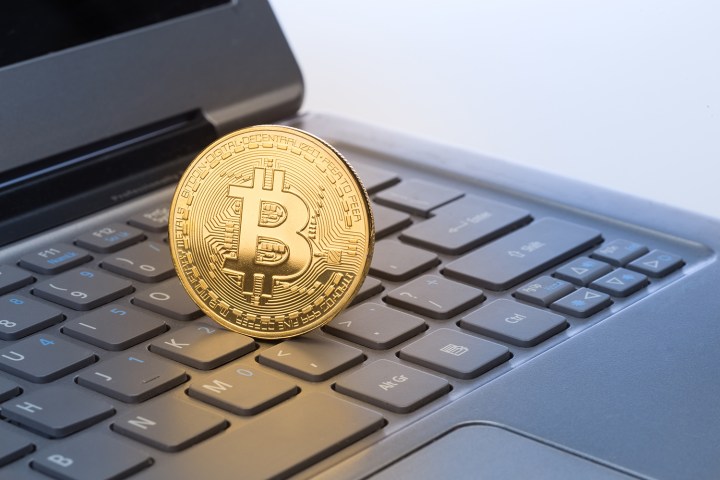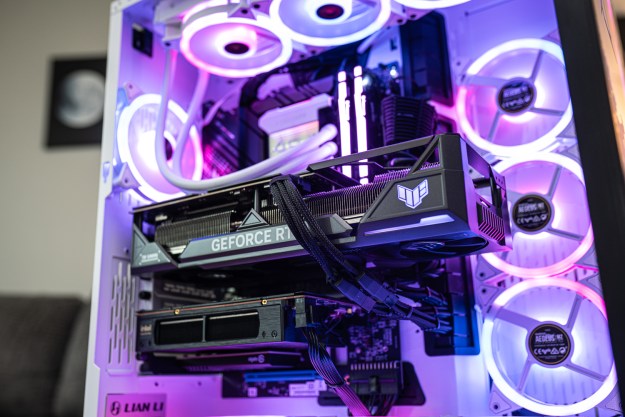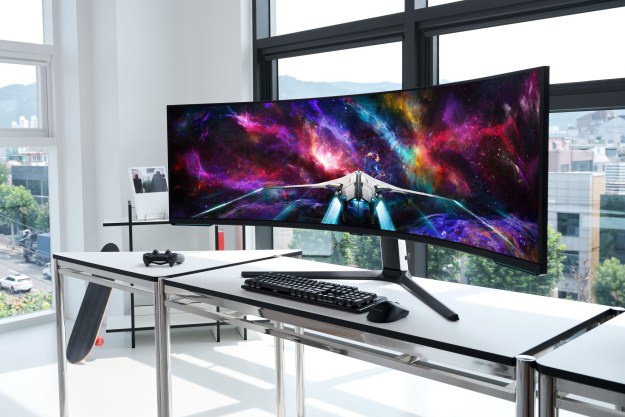
Although graphics card price tags always fluctuate around – and often above – their suggested retail price (MSRP), they’ve skyrocketed in the last few months, sometimes more than doubling. No, this wasn’t because a surge of new gamers began trying to render gorgeous high-end games. The culprit was a fresh batch of cryptocurrency miners. Riding the wave of record cryptocurrency highs, they descended on hapless retailers like a Mongol horde, buying up every energy efficient graphics card they could find.
It left supplies destitute, and like every case of an imbalance in supply and demand, prices rose. From a gamer’s perspective, this is a disaster. If stock cannot be found because this trend continues, how will anyone be able to upgrade their computers in the months to come when new games come out or heaven-forbid, their current graphics card dies?
Fortunately, gamers are not the only ones concerned by this trend, and a number of interested parties are aiming to turn things around.
A threat to PC gaming?
“Personally, I see this as a bad thing for the industry,” one graphics card manufacturer insider told Digital Trends. “These products were made for gaming, but now they’ll be used for something that the product wasn’t designed for – running 24-hours non-stop.”
Increases in component cost will always have a negative effect on business.
“It’s problematic for gamers, who now face poor availability and price hikes from retailers and resellers due to supply and demand.”
Ben Miles, managing director at British system builder Chillblast, told us that his company had faced price rises at the supply end, which meant rising prices for gamers.
“As you would expect, increases in component cost will always have a negative effect on business,” he said. “The shortages start at the cards that deliver the best bang for buck, then move onto the ones that delivers second best value, and so on, up and down the ‘cost vs compute’ bell curve.”
He went on to back up research we conducted into GPU pricing that showed mid-range cards, and those with a mix of energy efficiency and power, were the hardest hit. In other words, the most popular, affordable cards are selling out first. Some of the most powerful graphics cards may still be available, but not the ones a majority of gamers buy — a real problem.
Soon, supply woes may extend far beyond mid-range cards.
“Right now, the worst affected cards are AMD Radeon RX 580, 480, 470 and 570. NVIDIA cards are now also extremely affected with the 1060, 1070, 1080, and even 1050Ti in severe constraint,” Miles said. “As these cards dry up, pressure starts to be put upon cards above and below the ‘ideal’ GPUs in the product hierarchy.”
Miles iterated in clear terms where Chillblast’s loyalty lies, describing the cryptocurrency market as a “persistent clinical threat” to the gaming industry.
There are always two sides to the story
Not everyone is as against the new trend in cryptomining purchases, though. British component seller Overclockers UK hopes to build a middle-ground industry that caters to both gamers and miners equally. Andrew Gibson, the company’s purchasing manager, described the problem the retailer hopes to solve.
“We’re happy to support the miners, but at the same time we’ve been taking care to support our gaming community too, so it is fair for everyone. We have graphics cards for gamers making sure that they are listed at just one per customer, and offered special deals for our dedicated forum members.”
One insider predicted that we’ll soon see the crypto-miner demand for cards dwindle.
In addition to supporting gamers, OCUK has tried to divert the miners toward cards better suited for them, rather than dam them off entirely. “We are the first to list mining edition graphics cards, and high wattage power supply combos that are suitable for mining,” Gibson said.
These tactics give hope that the hardware industry is on the side of gamers, and pushing towards a world where products designed for them are reserved for them — but, that’s not the case at every company.
“We see [cryptocurrency sales] as a good thing,” one insider from a major GPU manufacturer told us. “The gaming industry has been growing every year, and now with the whole mining boom.” Although the representative did suggest that “higher management is split” on the supply issues driving up pricing, for the most part, the company appeared to be pleased with the overall uptick in sales, despite the effect it was having on gamers.
A source within Sapphire had similar feelings, though they felt confident the company can support both gamers and miners in the near future.

“We have very healthy demand for all our products, and although the mining business is taking a lot of boards we have responded with the specific mining [cards] to ensure we support both our gamers and the crypto currency business.”
At worst, manufacturers see this as a temporary problem, with one anonymous insider predicting that we’ll soon see the crypto-miner demand for cards dwindle.
“As the currencies become more difficult to mine, we will see the hobbyists losing interest due to the cost and the mining ‘professionals’ becoming more prevalent. There is a delay in matching supply with demand, but we should see in the long-term miners buying the specific mining cards, and gaming products freeing up.”
Nvidia and AMD need to try and do something to protect core gaming values.
Perhaps that is the best future that gamers can hope for. If, in time, cryptocurrency mining becomes less profitable, miners may move on to fancier new hardware, or the industry will constrict until there are only a few huge farms making the bulk of the money from it.
There is some evidence suggesting this will happen sooner rather than later. Ethereum’s value has fallen steadily in recent weeks. Bitcoin, meanwhile, is dealing with the increasing difficulty of mining new Bitcoin, as well as the threat of a currency split.
The shortage (probably) won’t last forever
But what if the current supply issues aren’t dealt with in the coming months? As one source sources told us, the current mining boom has lasted much longer than the Bitcoin GPU mining bubble in 2014. It could crash at any time, but it hasn’t yet, and it’s not clear it will.
Ben Miles at Chillblast called on AMD and Nvidia to do more to combat the problems faced by cryptocurrency miners.
“Nvidia and AMD need to try and do something to protect core gaming values by making mining products available and priced less than gaming equivalents,” he said.
Additional stock and more affordable, mining-focused hardware seems like the best way to combat the problem, but it’s not something that’s going to happen overnight. We may be months away from the graphics card industry returning to some semblance of normality, and that could in turn cause issues for system sellers and even game developers, as their next game may not receive the love they expected from gamers unable to affordable a new video card.
For PC gamers, this is a potential doomsday scenario, and one with no immediate solution. Still, some comfort can be taken in the very stress the surge in cryptocurrency has caused. Companies want to sell cards to as many people as will buy them, both gamers and miners. That should spur them to increase orders and build even more mining-focused cards – or so we hope.






